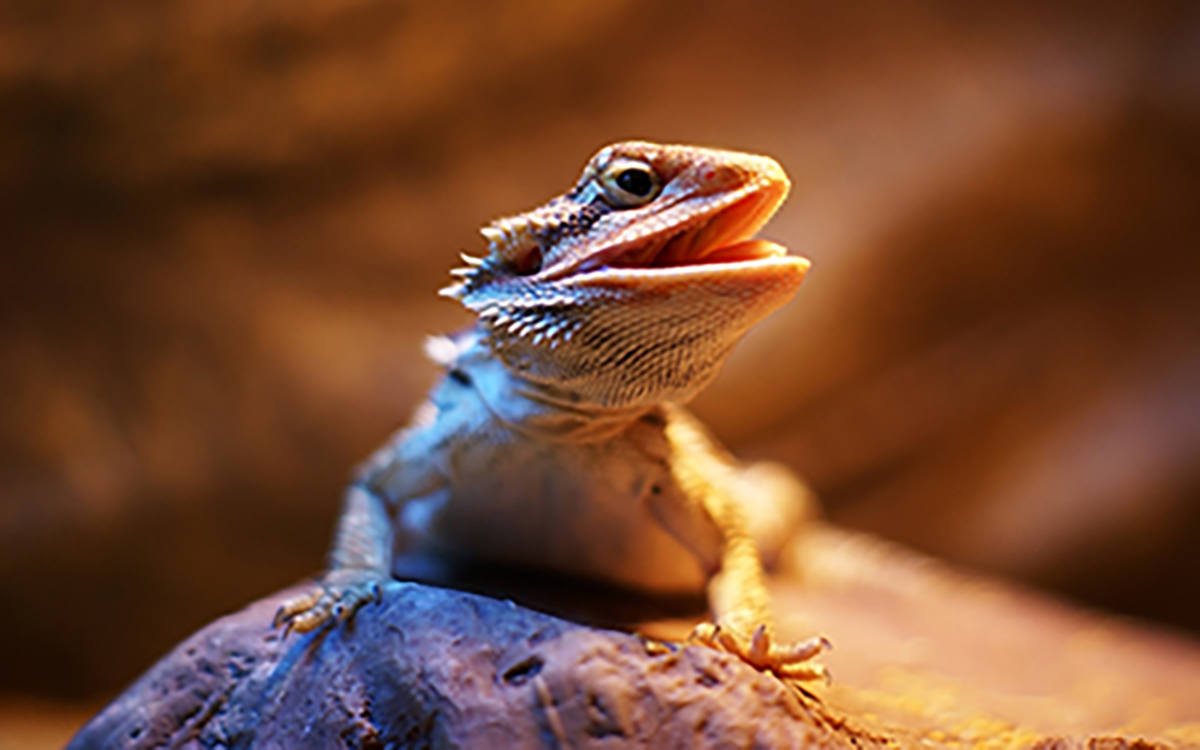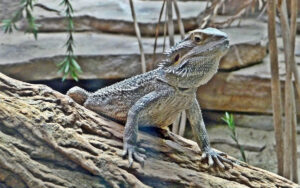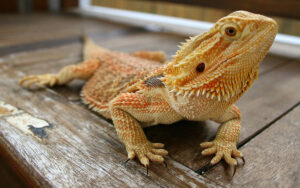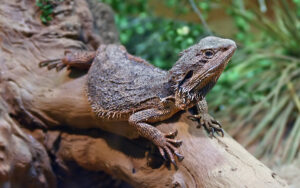Bearded dragons are basically the golden retrievers of the reptile world—chill, curious, low-maintenance, and generally just awesome pets. But while they may seem like easygoing little guys, they do have one non-negotiable: they need the right size tank to thrive.
And no, this isn’t one of those “they’ll grow into it” situations. Bearded babies grow fast, and their habitat needs change just as quickly. So let’s talk about how to choose the best bearded dragon tank size—from tiny baby beardies to full-grown desert royalty.

Why Tank Size Is a Big Deal
Baby beardies may start out small and manageable, but blink and suddenly you’re looking at a 2-foot-long adult lounging like a sun god under a heat lamp. Bearded dragons reach full size by around 16–18 months and typically grow to about 18–22 inches long (sometimes even a bit longer).
That means your dragon’s tank setup isn’t a “set it and forget it” kind of deal. You’ll need to make sure they have room to stretch, climb, dig, hide, and thermoregulate like the tiny dinosaurs they are.
Recommended Bearded Dragon Tank Size
So, What Size Tank Does a Bearded Dragon Actually Need? Good question! The size you’ll need depends on your dragon’s age and size, but here’s the short version:
Age |
Length |
Minimum Tank Size |
Largest Tank Size |
| Baby | Up to 10” | 20 Gallon 24” x 12” x16 |
40 Gallon 36” x18” x18” |
| Juvenile | 10” – 18” | 55 Gallon 48” x13” x21” |
75 Gallon 48” x 18” x 21” |
| Adult | 18” – 24” | 75 Gallon 48” x 18” x 21” |
120+ Gallon 42” x 24” x 24” |
Hot Tip: Go bigger when you can! Beardies love their space, and a larger tank means a happier, healthier dragon.

Why Bigger is Better (And Actually Necessary)
Bearded dragons aren’t just lounging around all day (okay, sometimes they are). They’re cold-blooded creatures, which means they rely on their environment to regulate their body temperature. In the wild, that means basking in the sun, then heading for the shade.
In captivity? That means they need a tank big enough to provide a proper temperature gradient. One side should be the hot basking zone; the other should be nice and cool. If the tank is too small, it just turns into a sauna—and that’s a one-way ticket to a very stressed-out beardie.
They also need room to:
- Climb on logs or branches
- Dig in a designated substrate area
- Hide out in cozy little caves
- Actually move without bumping into everything
Basically, you’re creating a mini desert playground—and that takes space.
Best Enclosure Types for Bearded Dragons
Now that we’ve covered how big, let’s talk what kind of enclosure works best. You’ve got a few options:
Glass Tanks:
The classic choice. They’re easy to find, look great, and give you full visibility of your beardie being adorable. Downsides? They’re heavy, pricey (especially as they get bigger), and fragile if dropped or moved around too much.
Plastic Enclosures:
These weigh less than glass and some are modular, meaning you can expand them. But they scratch easily, and good-quality plastic setups can get expensive fast.
Wood Enclosures:
Perfect for the DIY crowd. You can buy pre-made ones or build your own. Just keep in mind: wood needs to be sealed with a pet-safe waterproof coating or it can rot and grow mold. Also, less visibility unless you include a glass or acrylic front.
No matter which material you go with, make sure it has a secure lid. Beardies are sneakier than they look, and yes, they will climb out if given the opportunity.

Bearded Dragon Growth Chart (Because Yes, They Grow That Fast)
Age |
Length (inches) |
| 0-1 month | 3-4 |
| 2 months | 5-9 |
| 3 months | 8-11 |
| 4 months | 9-12 |
| 5 months | 11-16 |
| 6 months | 11-18 |
| 8 months | 13-20 |
| 12 months | 16-22 |
| 18-24 months | 16-24 |

Can You Keep Two Bearded Dragons Together?
This one comes up a lot, and the answer is pretty simple: nope.
Bearded dragons are solo creatures. They’re not pack animals, and they definitely don’t want a roommate. Even beardies that seem fine together at first can suddenly turn aggressive—especially as they get older and more territorial.
Sharing a tank can lead to:
- Fighting and injuries
- Dominance battles (one beardie hogs food, heat, and space)
- Constant stress that affects both dragons’ health
If you plan on having more than one beardie, do them (and yourself) a favor: give each their own setup.
Final Thoughts: When in Doubt, Size Up
If there’s one takeaway here, it’s this: don’t skimp on tank size. A spacious, properly set-up enclosure isn’t just “nice to have”—it’s critical for your bearded dragon’s health, happiness, and quality of life.
Whether you’re raising a tiny baby or setting up a luxury dragon suite for your adult beardie, giving them the space they need will make you a better reptile parent—and make your scaly sidekick way more content.
